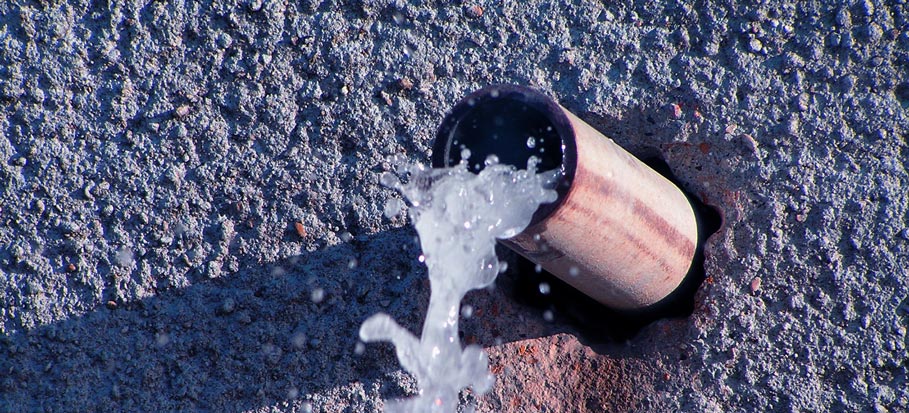6 Ways to Locate Hidden Water Leaks in Your Residence
6 Ways to Locate Hidden Water Leaks in Your Residence
Blog Article
We have stumbled on this post on Detecting hidden plumbing leaks directly below on the web and figured it made sense to relate it with you in this article.

Early discovery of leaking water lines can alleviate a possible catastrophe. Some tiny water leaks might not be noticeable.
1. Take A Look At the Water Meter
Checking it is a surefire way that helps you discover leaks. If it relocates, that shows a fast-moving leak. This indicates you may have a slow leak that can also be underground.
2. Inspect Water Usage
Assess your water expenses and also track your water intake. As the one paying it, you should see if there are any kind of discrepancies. If you detect sudden changes, in spite of your usage coinciding, it means that you have leaks in your plumbing system. Remember, your water bill should drop under the very same array every month. An unexpected spike in your costs indicates a fast-moving leak.
On the other hand, a constant boost each month, despite having the very same routines, shows you have a slow leakage that's likewise slowly rising. Call a plumber to thoroughly check your residential property, specifically if you feel a cozy area on your flooring with piping beneath.
3. Do a Food Coloring Test
30% comes from commodes when it comes to water intake. Test to see if they are running correctly. Decline flecks of food shade in the storage tank as well as wait 10 minutes. If the shade somehow infiltrates your bowl during that time without flushing, there's a leakage in between the tank and also bowl.
4. Asses Exterior Lines
Don't fail to remember to inspect your outdoor water lines as well. Should water permeate out of the connection, you have a loosened rubber gasket. One tiny leak can squander tons of water as well as spike your water costs.
5. Assess the situation and evaluate
Property owners should make it a routine to check under the sink counters and also inside closets for any kind of bad odor or mold growth. These 2 warnings show a leak so prompt focus is called for. Doing regular evaluations, also bi-annually, can save you from a significant problem.
If you recognize your residence is already old, maintain a watchful eye on your heaters, hose pipes, pipelines etc. Check for discolorations and also deteriorating as a lot of devices and also pipelines have a life expectancy. They will certainly also normally degrade due to deterioration. Don't wait for it to rise if you presume leaking water lines in your plumbing system. Call an expert plumber as soon as possible so you don't end up with a horrible mess in your house.
Early detection of dripping water lines can reduce a potential calamity. Some small water leakages might not be visible. Checking it is a surefire means that helps you uncover leakages. One little leak can squander tons of water and surge your water expense.
If you presume leaking water lines in your plumbing system, don't wait for it to rise.
WARNING SIGNS OF WATER LEAKAGE BEHIND THE WALL
PERSISTENT MUSTY ODORS
As water slowly drips from a leaky pipe inside the wall, flooring and sheetrock stay damp and develop an odor similar to wet cardboard. It generates a musty smell that can help you find hidden leaks.
MOLD IN UNUSUAL AREAS
Mold usually grows in wet areas like kitchens, baths and laundry rooms. If you spot the stuff on walls or baseboards in other rooms of the house, it’s a good indicator of undetected water leaks.
STAINS THAT GROW
When mold thrives around a leaky pipe, it sometimes takes hold on the inside surface of the affected wall. A growing stain on otherwise clean sheetrock is often your sign of a hidden plumbing problem.
PEELING OR BUBBLING WALLPAPER / PAINT
This clue is easy to miss in rooms that don’t get much use. When you see wallpaper separating along seams or paint bubbling or flaking off the wall, blame sheetrock that stays wet because of an undetected leak.
BUCKLED CEILINGS AND STAINED FLOORS
If ceilings or floors in bathrooms, kitchens or laundry areas develop structural problems, don’t rule out constant damp inside the walls. Wet sheetrock can affect adjacent framing, flooring and ceilings.
https://www.servicemasterbyzaba.com/blog/how-to-detect-water-leakage-in-walls/

Hopefully you enjoyed reading our section about Leaking water lines. Thanks a ton for spending some time to browse our short article. Sharing is nice. Who knows, you may be helping someone out. Thank-you for taking the time to read it.
Report this page